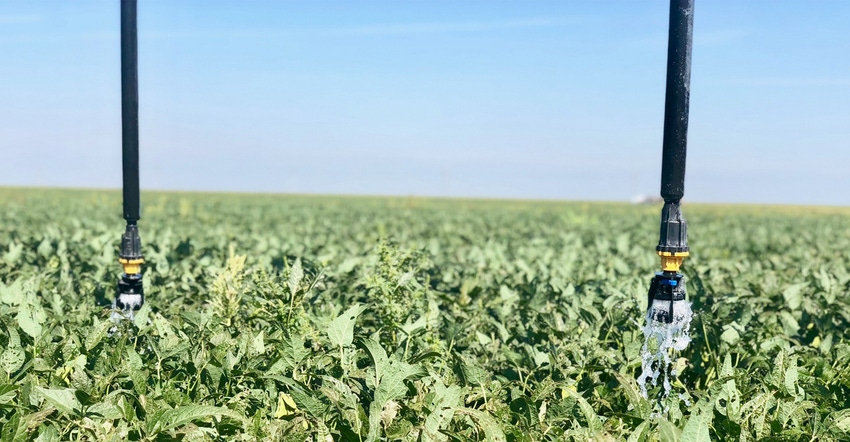
As the debate over the Green New Deal proposal heats up, agriculture has a new chance to shine a spotlight on what it does right.
Some leading voices are already pointing that out. That gives others a chance to echo their observations and some ideas to share.
Sen. Pat Roberts, chairman of the Senate Committee on Agriculture, Nutrition and Forestry, made remarks on the Senate floor in advance of a vote on the Green New Deal.
Roberts pointed out that supporters of the controversial proposal — which is so far just a framework of lofty goals with no specific proposals on how any of them should be achieved — are misinformed about American farmers, ranchers and growers who are already producing more food with fewer resources than they did a couple of decades ago.
“Those of us who represent farm country are grateful for the opportunity to underscore something that too many take for granted: farmers and ranchers in the United States grow the safest, most affordable and abundant food in the world,” Roberts said.
He pointed to the creation of the Foundation for Food and Agriculture Research, which leverages public and private dollars to bring together experts to identify and investigate ways to enhance the economic and environmental resilience of the food supply.
“I encourage the senator from Massachusetts and other cosponsors to simply ask for a briefing from the folks at FFAR. I would say the same to vocal colleagues on the House side,” Roberts said.
He pointed out that we cannot, and do not, produce food in the same manner our grandparents did, because those methods were not sustainable and today would not produce food at the scope and scale necessary to meet world demand.
He went on to point out that American ranchers raise the same amount of beef today as they did in the 1970s, but they do it with 33% less cattle. They have also reduced water use in pork production by 41% over the last 50 years.
Farmers embrace science, implementing new technologies such as biotechnology and no-till farming that improve the health of the soil and the quality of the water. In Kansas, farmers who rely on the Ogallala Aquifer and working steadily to reduce water use and save that precious resource.
Roberts is right to point out that for farmers, there’s nothing new in a “green deal.” It’s a great idea for everybody in farm country to make the same point to our urban neighbors.
Another voice pointing out the opportunity farmers gain from the spotlight on the Green New Deal debate came from Chris Jahn, president and CEO of the Fertilizer Institute.
“While the vote on the Green New Deal was largely symbolic, the conversations created by the non-binding resolution have the potential to be positive and lead to real change and action. We must all be good stewards of our shared resources, something the fertilizer industry has long known and championed through increased efficiencies, sustainability efforts and nutrient best management practices,” his statement read.
He pointed out that fertilizer accounts for more than 50% of global production but the industry strives to be more efficient with both the production and the use of its products.
“In 2017 our industry captured, re-used or recycled nearly a quarter of all greenhouse gas emissions and generated over half of all operating energy through waste heat capture. The amount of CO2 emissions captured in 2016 was the equivalent of taking 1.7 million cars off the road for a year,” he said.
Fertilizer has also reduced global deforestation, the effects of which harm our planet’s ability to absorb carbon emissions. Without the yield increasing effects of fertilizer on just U.S. corn alone, our country would need an additional 175 million acres of farmland, an area roughly the size of Texas, he pointed out.
The point about carbon capture is a significant one. I would add to the list from Roberts and Jahn by pointing out the significant carbon sink created by our innovative precision farmers and no-tillers who have steadily increased the amount of carbon retained in the soil. If anyone has studied just how much that is, I haven’t seen the numbers, but companies like NORI may soon be sharing the data as they work on setting up a new carbon trading platform.
While many people eschew the Green New Deal as a slam on agriculture, we should be embracing the debate as a way to get our story out there loud and clear: Farmers are definitely not the problem when it comes to climate change. In fact, farmers may very well be an important part of the solution.
That message needs to be heard loud and clear. This is not a time to be defensive. It’s a time to point out reality, throw open the gates and let the message out.
About the Author(s)
You May Also Like






